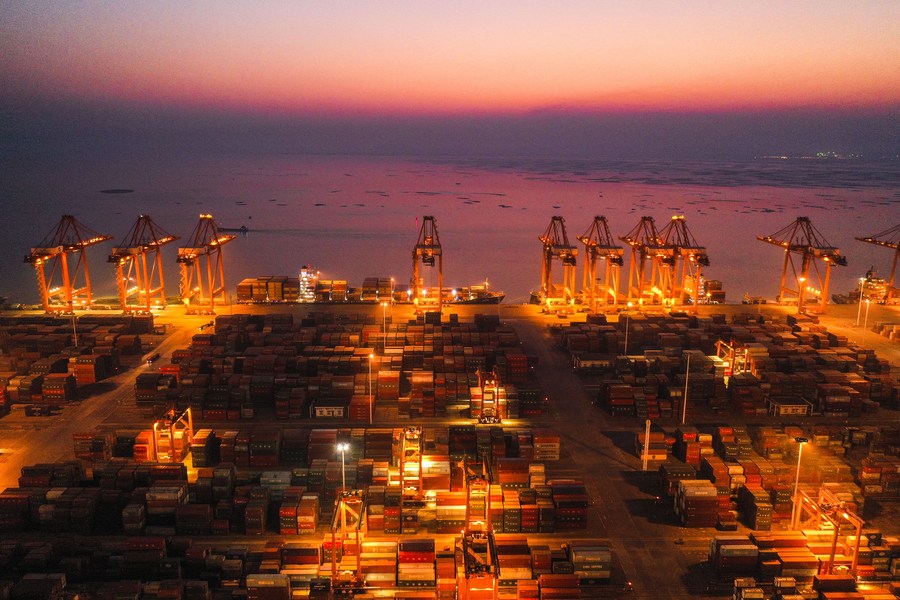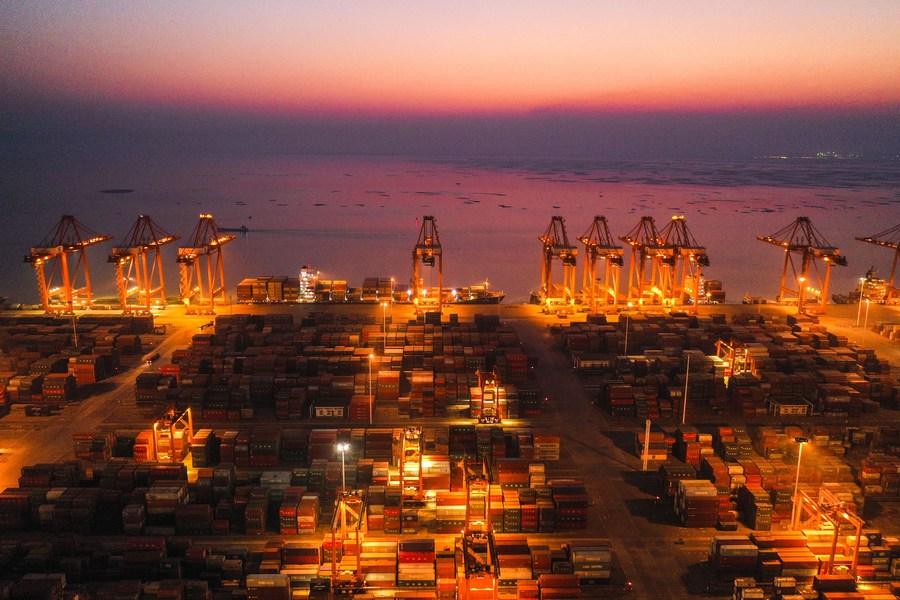
Aerial photo taken on Jan. 14, 2021 shows a view of the container wharf of Qinzhou Port, south China's Guangxi Zhuang Autonomous Region. (Xinhua/Cao Yiming)
BEIJING, March 24 (Xinhua) -- The Regional Comprehensive Economic Partnership (RCEP) came into force for Malaysia on March 18, making the deal now effective for 12 of its 15 signing members. As the RCEP takes effect in more countries, it brings more benefits.
-- Increasing trade volume
In the first two months of 2022, China's imports and exports with the RCEP trading partners increased 9.5 percent year on year to 1.85 trillion yuan, accounting for about 30 percent of China's total foreign trade volume.
"The 9.5-percent increase of China's trade with the RCEP countries is consistent with or even slightly higher than our estimation," said Zhang Jianping, a senior researcher with the Chinese Academy of International Trade and Economic Cooperation, adding that ASEAN, Japan and South Korea, which are members of the RCEP, are among China's top five trading partners.
It is foreseeable that convenient management approaches and cumulative rules of origin will bring massive and positive influences on the long-term, continuous and rapid increase of trade among the RCEP members, said Zhao Jinping, former director-general of the Research Department of Foreign Economic Relations of the Development Research Center of the State Council.
-- Opportunity coexists with challenge
As a free trade agreement covering the largest world population and with the largest economic size and development potential, its entry into force will bring enormous opportunities for China's manufacturing.
With the RCEP's implementation, Chinese companies may make full use of the tariff reduction commitments and cumulative rules of origin to expand China's exports of competitive products in textile, light industry, electronic information, automobile and parts, mechanical equipment and other industries and explore new markets.
Meanwhile, China will make great efforts to establish a fairer and more equitable business environment, open up its manufacturing at a higher level, and create more investment opportunities for the RCEP members.
However, China's industries and enterprises will also face higher standards, stricter rules and harsher competition.
For example, some of China's middle and high-end industries will face competition from Japan and South Korea, and some traditional industries will also face trade competition from ASEAN.
-- Digital transformation becomes a trend
The launch of unified e-commerce rules, paperless trading, electronic authentication and electronic signature, personal information protection for e-commerce users, online consumer protection, etc. in RCEP region will accelerate the digital transformation of industries.
The Asia-Pacific region, home to the RCEP members, has become the world's largest e-commerce retail market since 2013.
According to the statistics, major ASEAN economies, such as Singapore, Thailand, Vietnam, Malaysia, Indonesia and the Philippines, saw 40 million new internet users in 2021. The number of internet users in the region increased to 440 million from 360 million in 2019, and the internet penetration rate rose to 75 percent. At the same time, China's e-commerce continues its sound development and its online retail sales of physical goods nationwide in 2021 exceeded 10 trillion yuan for the first time.
Experts believe that the RCEP e-commerce rules have created a more convenient online business environment.
(Edited by Bao Nuomin with Xinhua Silk Road, baonuomin@xinhua.org)




 A single purchase
A single purchase








